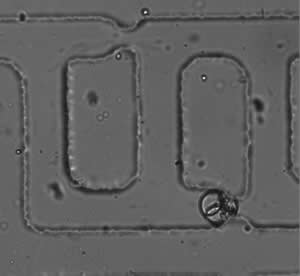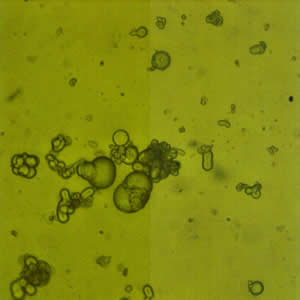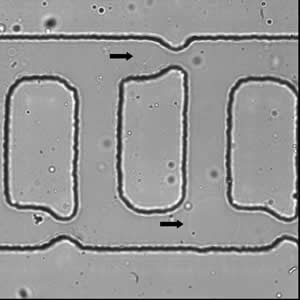
 |
 |
 |
 |
 |
|
Undergraduate Student Office: 226 Mason Lab Phone: (203) 436-4059 |
|
B.S. in Chemical Engineering from Yale University, expected June 2009 Joined the Osuji lab in February 2008 as a junior chemical engineering major. Grew up in Tampa, FL, and gained industrial experience at Lincoln Electric and BASF Corp. during summer internships. Current interest in microfluidics and vesicle manipulation. |
||
|
||
Vesicles are interesting structures formed by the complete enclosure of fluid by a bilayer membrane. The membrane may be composed of phospholipids, in which case the vesicle is called a liposome, or of amphiphilic block copolymers, in which case it is referred to as a polymersome. Vesicles have attracted a lot of attention for their potential in drug delivery applications, and more recently, as synthetic structures that mimic the behavior of cells. Motivated by this, we seek to develop microfluidic devices for assaying the mechanical properties of such soft deformable constructs. This study involves the development of microfluidic devices for the manipulation of micron-scale vesicles. Work has focused on robust generation of homogeneous distributions of unilamellar vesicles. Vesicle creation techniques including electroformation and rehydration are being studied, and various purification techniques are under consideration. Of prime interest is the role microfluidic devices can play in the sorting, isolation, and manipulation of these vesicles. As seen in Figure 1, the vesicles created by bulk rehydration are neither homogeneous in size, nor largely unilamellar. Electroformation has shown promise in creating a greater percentage of unilamellar vesicles, but the overall vesicle concentration is lower. Regardless of the vesicle creation technique employed, purification techniques are necessary. Though many papers have explored the potential for vortexing, freeze-thaw cycles, extrusion, sonication, and other techniques [1,2,3] in the homogenization of vesicle dispersion, this research is primarily concerned with the used of microfluidic filtration devices, such as the one shown in Figure 2. Investigations will characterize the practicality and performance of such devices. Furthermore, the majority of studies concerning the mechanical properties of large, unilamellar vesicles use dynamic light scattering measurements to characterize the size and deformation of vesicles under stress.[4] This study attempts to utilize microfluidic parking devices to capture single vesicles, which can then be individually analyzed while subjected to osmotic stresses. Figure 3 shows the microfluidic parking device with two trapped unilamellar vesicles. Later studies will subject such vesicles to osmotic pressure gradients while continuously analyzing the vesicles' deformation. |
Figure 1: Highly polydisperse suspension of single and multilamellar vesicles produced by simple bulk rehydration. |
|
Figure 2: Layout of one of the microfluidic devices used in this work |
||
Figure 3: Two unilamellar vesicles in parking device. The image was taken in brightfield and is slightly defocused. The vesicles appear as faint circular outlines. |
||
Related Publications:
|
||
|
|
||






